The dramatic Convento de Santa Catalina in Arequipa
The dramatic Convento de Santa Catalina in Arequipa
Convento de Santa Catalina de Siena (Convent of St Catherine of Siena) was built in 1579 in the Viceroyal architectural style and is located in the historical centre of Arequipa, Peru.
Unfortunately the years and acid rain have taken a toll on the lovely frescos painted along the arched corridors. But there are attempts to preserve and restore this treasure.
The foundress of the monastery was a rich widow who did not have any children, Doña María de Guzmán who decided to join the order and donated her entire wealth in 1579 to build the monastery.
The tradition of the time was for the second son or daughter of upper class Spanish families to pay a handsome dowry of 2,400 silver coins, equivalent to about US $150,000 today, and enter a life of service in the Church. Many of the women at this monastery were indigenous criollas and daughters of curacas (Indian chieftains). Wealthier patrons brought along China, silk linen and fancy rugs - though it appears that poorer nuns were admitted for free.
Here is a remarkable story told of one of the nuns of this convent, Sor Ana de Los Angeles Monteagudo (1595 - 1668). She first entered the convent as a three-year-old, spending most of her childhood there till her parents pulled her out when she came of age. She refused to get married and was allowed to returned as a noviciate. She rose through the ranks and was elected Mother Prioress. She became famous for being able to accurately predict of death and disease and was credited with innumerable healings. One such case involved a severely inflicted painter who painted the sole portrait of her. It is rumoured that as soon as he completed the portrait, he was miraculously healed. Upon her death in January of 1686, a petition to name her a saint was submitted to the Catholic church, but it wasn't until 1985 when St. Pope John Paul II visited the Monasterio did her process of beatification start. The Holy Father said these words: "Today the Church in Arequipa and throughout Peru wishes to worship God in a special way for the benefits He has granted to the People of God through the service of a humble nun: Sister Ana de los Ángeles Monteagudo."
The 2nd largest city of Peru, by population, is skirted by four imposing volcanoes, which unfortunately are seeing glaciers melt due to global warming. The tallest peak Ampato (“frog” in Aymara) stands at 6,288 m above sea level. Arequipa is known for its stews and casseroles cooked over fire. Arequipeños are proud of their cuisine and also like it hot! The city is famous for its spicy food preferences and picanterias (spicy food places). Quite well preserved therefore are the kitchens with wood fired stoves and ovens and an assortment of cooking paraphernalia.
The whole city of Arequipa was laid out with gravity fed water channels - the cloister too has an elaborate system of laundry half-vessels - by blocking the main channel with a stone a stream of water gets diverted into the half-vessel for rinsing clothes
The narrow streets, named after famous Spanish places like Cordova, Sevilla, Burgos etc, are lined with adobe structures many with arched colonnades surrounded by courtyards, some with gardens containing fountains and flowering plants.
We tarried awhile in one of the more extensive gardens filled with flowers and tropical fruit (avocado, papaya, citrus, etc).
 |
| Tamarillo |
I was curious about a singularly different fruiting tree. Turns out it is a Tamarillo (Solanum betaceum) a fast growing tree of the Solanaceae (nightshade) family that can reach a height of 5 m over a 12 year period. After 4 years it produced egg shaped fruit of varying colors (yellow, orange, red to purplish). Red fruits are more sour, yellow and orange fruits are sweeter. The flesh has a firm texture and contains more and larger seeds but some gardeners I know prefer to graft on other nightshade like tomatoes and eggplants to get the best of both worlds.


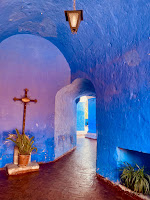

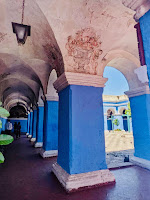





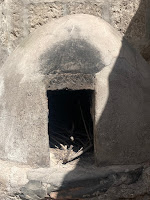


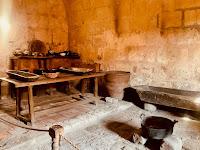

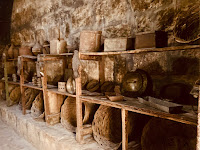












Comments
Post a Comment
Please keep conversations courteous and on-topic. Kindly don’t engage in trolling, flame-baiting, name-calling, insulting, stereotyping or gratuitous attacks. Thank you for being a good citizen.